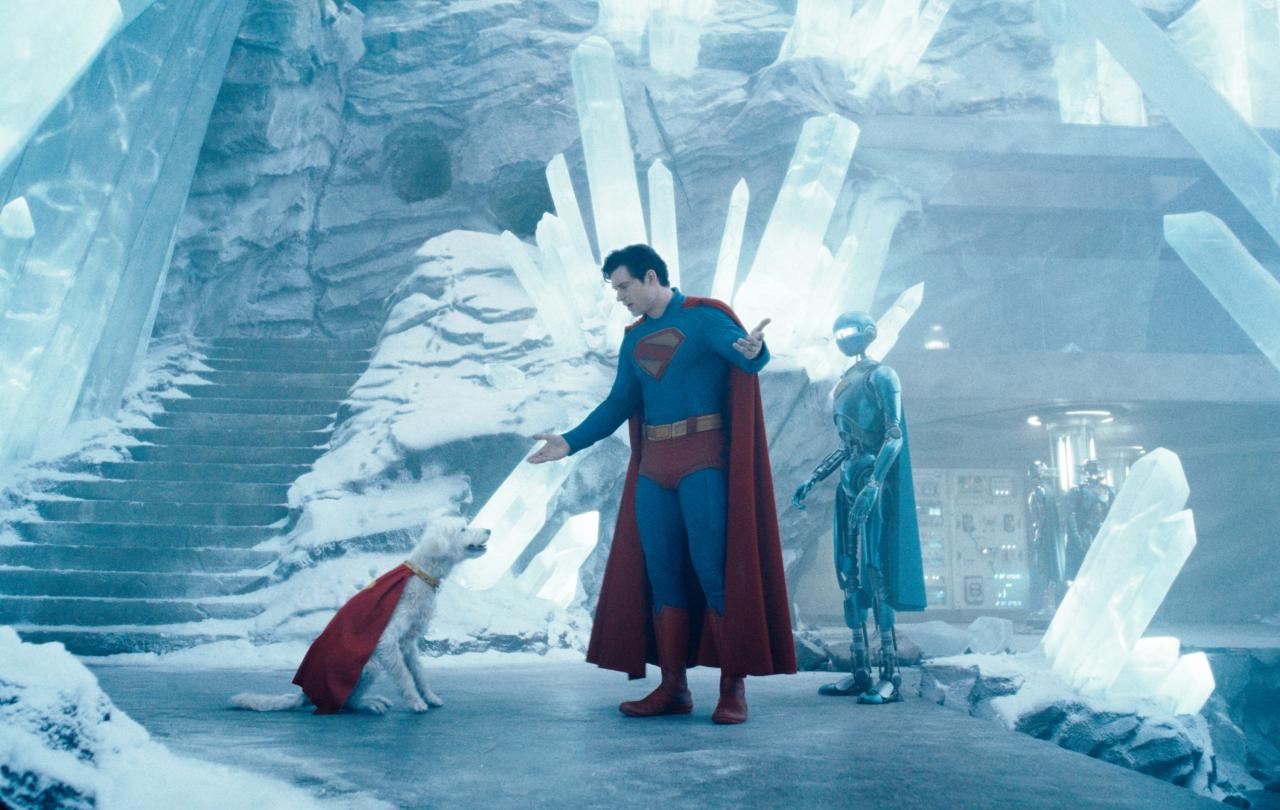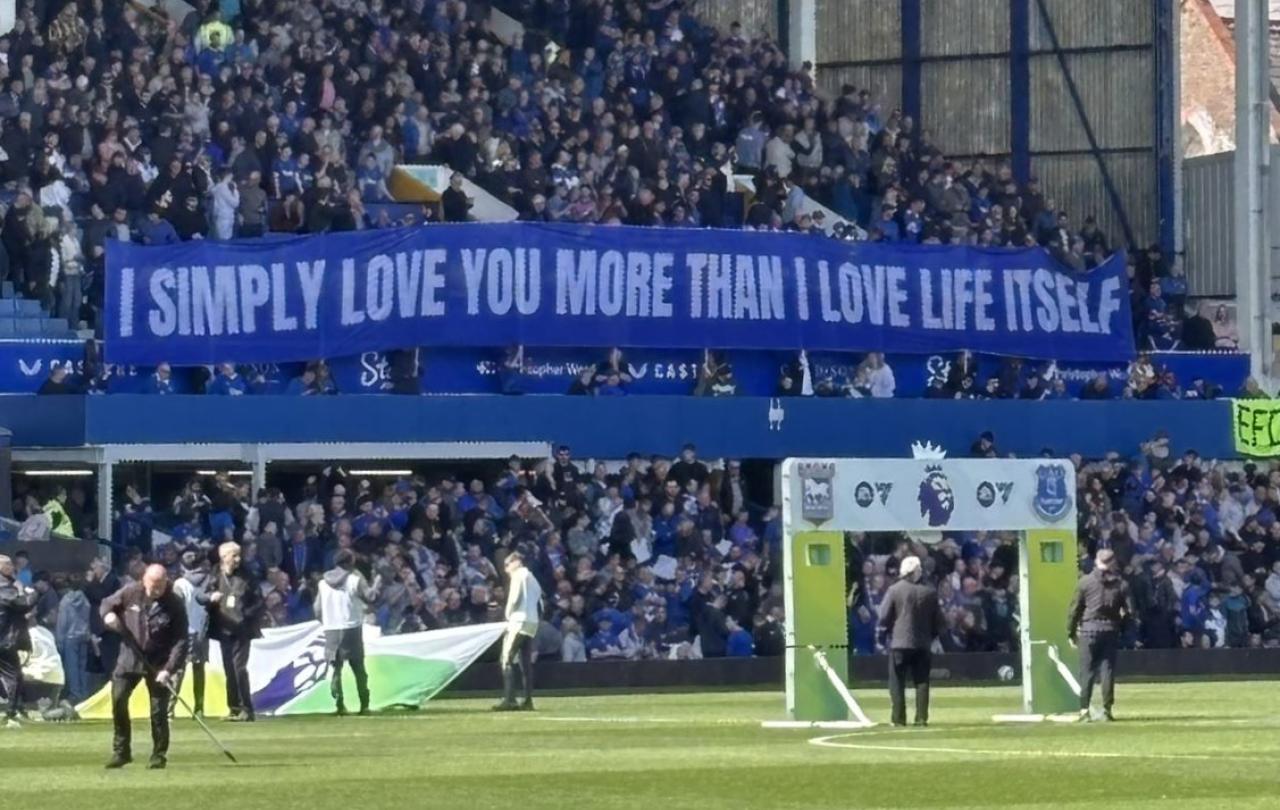
…and that’s what makes this film so enjoyable!
Oh, apologies for any confusion.
No tortuously ‘relevant’ preamble from me today. I’m starting the review right in the middle of the action, because that is exactly what Superman does. No initial slog through a ‘backstory’ that everyone knows – even my wife, who has never read a comic book in her life, is familiar with who and what Superman is. The closest we get to contextualisation is a quick sequence of text: informing us that Superman landed 30 years ago (adopted by the Kent couple, and given the name Clark), began his superhero career three years ago, stopped the fictional nation of Boravia invading the equally fictional Jarhanpur three weeks ago, and three minutes ago lost a battle for the first time.
Boom!
Then straight into the action!
Superman lands in the frozen tundra of the Antarctic and can barely breathe. He lets out a whistle and the next thing we know there is a tremendous snowy disturbance. Krypto the Superdog dashes into view! No explanation – just delight in the fact that there is a mischievous canine with unbelievable power. Krypto drags Superman ‘home’ to the Fortress of Solitude. There the Superman robots heal him with a concentrated dose of radiation from the Yellow Sun which gives him his power. He immediately departs to continue his bout against the nationalist supervillain ‘Hammer of Boravia’, who is secretly being controlled by the evil genius and billionaire Lex Luthor.
The pace of this film isn’t fast…its hypersonic. It flies by at the speed of Superman himself. There isn’t any lag, any let up. Even the quieter moments, such as those meditating on Superman’s dual identities (the alien superhero Kal El/Superman and the human reporter Clark) or his burgeoning relationship with investigative journalist Lois Lane, keep the story moving. Exposition doesn’t take place through inexplicable monologues; it is always pacy conversation, which teaches us something about the characters and their relationships and their motivations.
This is the great triumph of writer/director/producer James Gunn. After his success over at Marvel Studios, he has taken the helm of DC and started to create a universe of characters and stories that doesn’t waste time with painful ‘exploration’ and moralising. This was always the issue that held DC films (arguably featuring the more beloved and well-known characters in comic-book culture) back from matching the success of Marvel. Christopher Nolan is a genius, giving us a superb Batman trilogy, and Zac Snyder produced an underrated dark take on Superman, but neither seemed to delight in the bright, bubble-gum, kaleidoscopic colourfulness of the comic-book medium.
Gunn refuses to make his Superman film gritty or realistic. Characters appear in all their flash and bombast and are welcomed as cheery additions. The ‘Justice Gang’ are simply there – including the always enjoyable Nathan Fillion with an arrogant smirk and an almost offensive bowl cut. Luthor’s genius allows his to create a parallel dimension…why couldn’t he!? If we can suspend our disbelief to accept a protagonist who is an alien superhero, why not a mini-universe?
There is none of the former focus on psychological trauma and existential crisis and the sheer overwhelming ennui of being. In previous films the ethical lesson wasn’t just ‘on the nose’…it flattened your nose with a Mike Tysonesque haymaker! Here, Superman simply IS. He IS good. He IS upstanding. He IS fighting for truth and justice. He refuses to allow political and public-relations considerations to corrupt and dilute his absolute commitment to do (and to BE) what is right. One of the most dramatic scenes isn’t a grand battle, it is a quiet moment where Clark allows Lois to interview him as Superman. The more she questions the realpolitik implications of stopping an invasion, the more Clark becomes incensed. How could someone not allow themselves to save innocent life and serve justice to the oppressed against the oppressor?
The film is such a ‘sigh of relief’ in a bloated comic-book-film market. Yes, the script is hilarious – this is Gunn’s forte. Yes, the music is sublime – both John Murphy and David Fleming’s score (with wonderful nods to the John Williams original) and Mr Gunn’s own needle-drops. The performances are excellent across the board – special mention to David Corenswet, who doesn’t quite look like Superman to me…but boy does he embody the very essence of the character, to the point where you can’t imagine anyone else having played the alien since Christopher Reeve. But its truest strength and victory is its joy in the simplicity (especially moral) of this comic-book genre.
This is what is so refreshing about Gunn’s vision. Superman IS pure. Lex Luthor (Nicholas Hoult not missing a baldy beat) IS so prideful and vain that it has warped him into something twisted and evil and collapsing in upon his own ego. Watching the film, I was put in mind of C. S. Lewis’ writing on the nature of fairy tales:
“For in the fairy tales, side by side with the terrible figures, we find the immemorial comforters and protectors, the radiant ones…”
Comic-books are the great fairy tales of the modern age…why would we make them brooding deconstructions of the human condition, a la Cormac McCarthy? That isn’t their point or purpose. Lewis again:
“Since it is so likely that they [children] will meet cruel enemies, let them at least have heard of brave knights and heroic courage. Otherwise you are making their destiny not brighter but darker.”
Gunn has given us a film that isn’t just fun and fluffy, but important. In his sugary, childlike wonder and delight in the genre, he has given us a tale of good versus evil that is a true fairy tale: something gleaming and good, something radiant and right, something attractive and aspirational. Superman is a fairy tale where we can be comforted and emboldened by the moral (nay, ontological!) certainties of love and hope.
5 stars
Support Seen & Unseen
Since Spring 2023, our readers have enjoyed over 1,500 articles. All for free.
This is made possible through the generosity of our amazing community of supporters.
If you enjoy Seen & Unseen, would you consider making a gift towards our work?
Do so by joining Behind The Seen. Alongside other benefits, you’ll receive an extra fortnightly email from me sharing my reading and reflections on the ideas that are shaping our times.
Graham Tomlin
Editor-in-Chief





